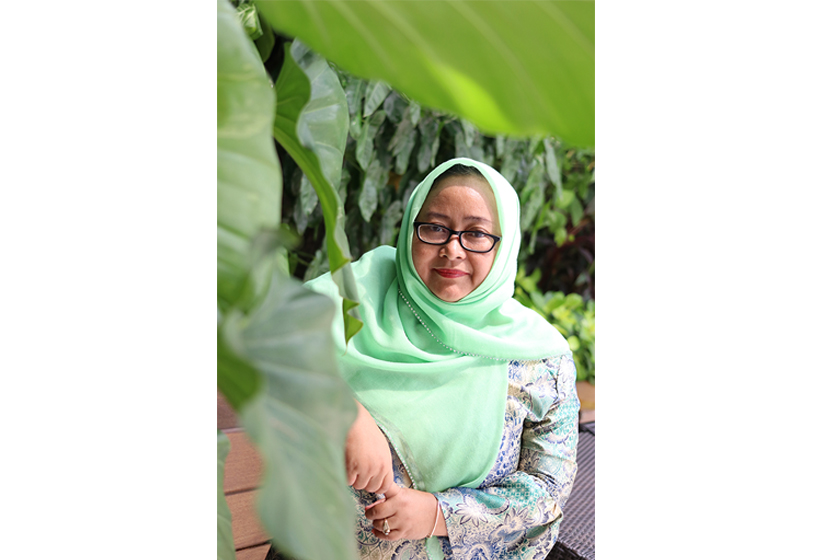Project Leader: Ika Kustiani
University of Origin: Doctor of Philosophy, Curtin University of Technology
Collaborating Organisations: Tourism Department of the Province of Lampung and National Agency for Disaster Management (BNPB)
Project Locations : Desa Tejang, Sebesi Island, the District of South Lampung
Activity Type : Capacity building, mentoring or coaching
Sector : Disaster Prevention and Management
Project Rationale:
Based on the Ministry of Tourism data, Lampung is ranked seventh out of eleven provinces most visited by tourists. The data also shows a sharp increase in the number of tourists to Lampung by 54% in 2017. Many new tourism areas have sprung up due to the spread of information by young people through social media. With a coastline length of about 1,105 km and about 132 islands, many tourist destinations in Lampung are coastal and island tourism. Sebesi – Krakatau Island is one of the province's Strategic Tourism destination that attracts the most tourists.
Sebesi is a small island of 2,620 hectares in the Sunda Strait. With the population of nearly 3,000, it is the closest inhabited island to the Krakatoa. Recently, the government changed the status of Krakatoa Island from a nature reserve to a conservation area. With this new status, the islands which previously can only be visited for research purposes now can be visited by anyone. Visitors of Krakatoa have to transit to Sebesi Island before/ after visiting Krakatoa Island. The island also a suitable place to observe the activities of Mount Krakatoa. Moreover, Sebesi Island is famous for its beautiful panoramas, clean and sloping beaches, crystal clear water and stunning coral reefs. This makes Krakatoa - Sebesi Islands as a package of tourist destinations.
In the midst of increased tourism activities, a series of tsunamis hit the Sebesi Island on Saturday (22/12/2018) night with a wave height reaching three meters. The tsunami was resulted of volcanic eruption of the Krakatoa.
A tsunami causes a large sea level rise, resulting in a high energy difference. This high difference in energy results in high speed flow. This flow has very large damage power. As soon as it is raised, a tsunami propagates in all directions. During propagation, the wave height is getting greater. When it reaches the beach, the mass of water will propagate up to the land. The height of the tsunami wave when it reaches the beach is strongly influenced by the contour of the sea floor around the coast. This is why coral reefs are very useful in breaking down tsunami waves. While the distance of the tsunami runoff towards the land is strongly influenced by the topography and land use in the coastal area. This is also why mangrove is very important when the tsunami struck.
Since the mangrove forest in the Sebesi Island only covers about 1.5 hectares (0.06%) of the Island, the tsunami had damaged almost all infrastructure and tourism facilities in the coastal area. The problems are exacerbated by unpreparedness and inadequacy of generally low-educated Sebesi local people to mitigate and manage disaster situation and safeguard the inhabitants as well as the visitors. Days after the tsunami, the waves and strong winds made Sebesi Island isolated and the condition of people living there could not be known. Although further news was known that no recorded deaths of Sebesi Island resident, almost all the island inhabitants were evacuated to the district capital on the mainland of Sumatra.
Now, about a month after the disaster, tourists began returning to visit Sebesi - Karakatoa Islands since the public's curiosity about Krakatoa exceeded the fear of the risks. This is what underlies the Krakatau disaster mitigation and preparedness training needs to be done for the safety of Sebesi – Krakatoa ecotourism. Therefore, the general purpose of the Grant Scheme Alumni Project is to provide trainings Sebesi local communities to be able to: (1) safeguard the Sebesi Island marine and coastal conservation and the existence of Mount Krakatoa Island; (2) manage a community-based and environment-based coastal tourism; and (3) mitigate and prepare for disasters related to the volcanic activity of the Krakatoa Island.
The target of this activity is community based tourism group called POKDARWIS (Kelompok Sadar Wisata or Tourism Conscious Group) and community based conservation groups called MDK (Model Desa Konservasi or Conservation Village Model) and community based management group of DPL (Daerah Perlindungan Laut or the Marine Protected Area). Through the project, it is expected that the capacity of the local community of Sebesi Island in managing a sustainable community based eco-tourism could be improved by providing public awareness campaigns, capacity building, mentoring and coaching as well as knowledge and technology transfer. Increasing the capacity of local people is an effective way to empower local communities to achieve sustainable development goals and eradicate poverty
Project Description:
The proposed project is Sebesi – Krakatoa Island Ecotourism and Tsunami Mitigation and Preparedness Project, Lampung. Through the project, it is expected that the capacity of the local community of Sebesi Island in managing a safe and sustainable community based and environment-based eco-tourism could be improved by providing public awareness campaigns, capacity building, mentoring and coaching as well as knowledge and technology transfer. The project activities is an effective way to improve the capacity of local Sebesi people in mitigating and managing risk related to tsunami and volcanic eruption of Mount Krakatoa Island; increase the coastal environment in facing the tsunami disaster by expanding mangrove forests and coral reefs; as well as empower local communities to enhance a safe and sustainable ecotourism practices so as the economics of the local people from this activities could be flourish. At the end sustainable development and poverty eradication goals can be achieved.
Project Beneficiaries:
Community based tourism group so called POKDARWIS (Kelompok Sadar Wisata or Tourism Conscious Group) and community based conservation groups so called MDK (Model Desa Konservasi or Conservation Village Model) and community based management group of DPL (Daerah Perlindungan Laut or the Marine Protected Area)
Priority Development Area:
Economic institutions and infrastructure
Links with Australia:
Curtin University


 Sebesi – Krakatoa Island, Ecotourism and Tsunami Mitigation and Preparedness Project, Lampung
Sebesi – Krakatoa Island, Ecotourism and Tsunami Mitigation and Preparedness Project, Lampung
